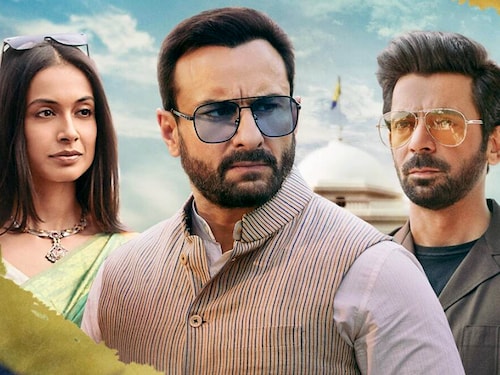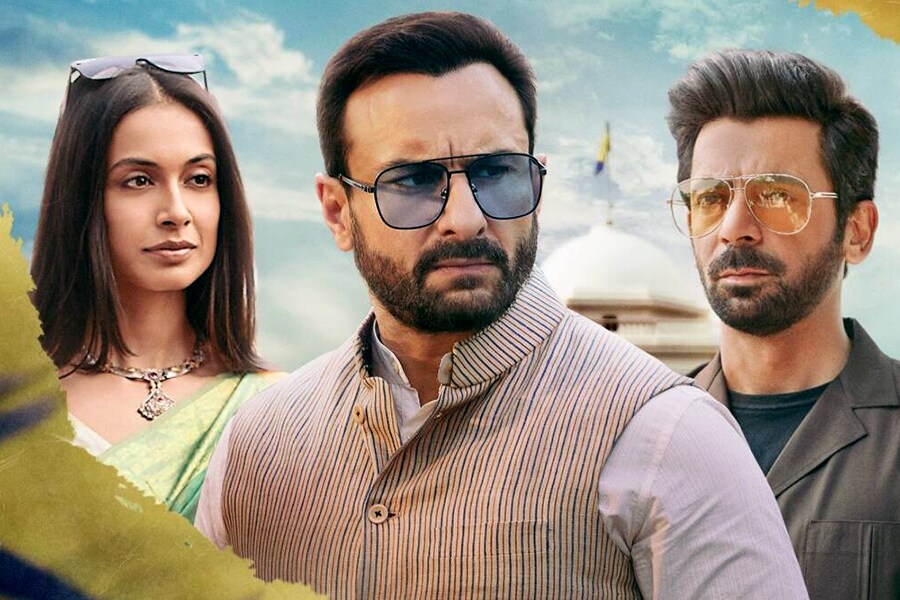Censorship or Certification: How should OTT platforms be regulated?
There was consensus among the Parliamentary Standing Committee on Information Technology to protect creative freedom. Forbes India gets you unknown details from the meetings


 Image: Courtesy Prime Video
Image: Courtesy Prime Video
The Parliamentary Standing Committee on Information Technology heard from two “non-official witnesses”—Vani Tripathi Tikoo, a member of the Central Board of Film Certification (CBFC), and producer and director Kabir Khan, a member of the Producers Guild of India—on how films and streaming platforms should be regulated, and what kind of interventions are required at a legislative level. Both Tikoo and Khan agreed that there is a need to move from censorship to certification, but they differed on how OTT platforms should be regulated, Forbes India has learnt after talking to multiple sources aware of the proceedings. There was consensus among the committee members that the Cinematograph Act, 1952, needs to be amended.
How should OTT platforms be regulated?
Tikoo argued in favour of creating some sort of regulation or guidelines for OTT platforms such as Netflix, Disney+ Hotstar, Amazon Prime Video and others to level the playing field between movies released in theatres and those released on streaming platforms. This is in line with the argument she made in her November 2020 report, ‘Embracing Non-Linearity: Embracing the Future of India’s Entertainment Industry’, co-authored with director Shekhar Kapur. It is understood that she argued that movies that are directly released on OTT platforms do not have to be certified by CBFC and get an advantage over those that release in theatres. However, she did not champion censorship and instead argued in favour of certification while explaining how CBFC’s certification process works.
Khan, on the other hand, argued that ideally, there should be no regulation. If there has to regulation, he said, there should be self-regulation—which should, at best, be limited to certification. He said the choice to view content, even in theatres, should be left to the viewers. Once it is certified—whether the content has violence, nudity, strong language or any other pre-determined features—it should be up to the viewer to decide whether or not they want to watch it. To protect children, OTT platforms also provide parental controls, Khan explained.
Khan told the committee that in case of OTT platforms, the content in question is “pull” content—that is, the viewers choose to search certain content and then watch it. This is in contrast to content broadcast on TV which is “push” content—the content is not chosen by the viewer and is instead pushed on them. The main aim, Khan argued, should be to grade a film so that the viewers can choose whether or not they want to watch it.
One member asked what should be done when certain communities and Gods are shown in “bad light”. It was then that other members intervened to explain that creativity needs to be understood within the larger context. Tikoo and Khan said creative freedom should not be curtailed. In response to an unknown question, Khan explained that in his upcoming movie ’83, which stars Ranveer Singh as World Cup-winning cricket captain Kapil Dev, he has shown batsman Krishnamachari Srikkanth smoking in order to depict reality.
Currently, movies released in theatres are certified by CBFC prior to their release while the Broadcasting Content Complaints Council, a self-regulatory body, takes complaints related to non-news content on television. IT Parliamentary Committee’s chairperson Shashi Tharoor in January 2019 had argued that the CBFC “should not have pre-censorship powers”.
In the past, Tikoo has argued for self-regulation of OTT platforms that should be distinct from how movies are certified. “When you watch a movie in a theatre with a thousand-odd people who are strangers, the impact is completely different from watching it in private or with three members of your family. That distinction needs to be understood,” she had said.
There was also discussion on whether or not censorship is even possible in the digital age given how easy it is to circumvent it.
In his deposition in January, Prasoon Joshi, chairperson of CBFC, had also argued in favour of regulating OTT platforms. In a July 2020 opinion piece for The Indian Express, Joshi had argued that due to the pandemic, even consumption of content on OTT platforms had become a collective exercise, thereby raising need for “greater scrutinisation of content by the viewers”.
On January 31, Information and Broadcasting (I&B) Minister Prakash Javadekar, according to an ANI tweet, had said that guidelines for regulating OTT platforms would be released soon. In September 2020, 15 streaming services, including Disney+ Hotstar, Amazon Prime Video and Netflix, had released a self-regulatory code, titled “Universal Self-Regulation Code for Online Curated Content Providers”. However, this code was not endorsed by the I&B Ministry.
Seventeen MPs, including former MIB Minister Rajyavardhan Singh Rathore and actors and MPs Sunny Deol and Sumalatha Ambareesh, attended the IT Parliamentary Committee meeting on February 5. It is understood that Deol and Ambareesh voiced their opinion in favour of preserving creative freedom.
Report on India’s 5G preparedness due soon
A day before the meeting about the functioning of the CBFC, the Standing Committee discussed its upcoming report on 5G preparedness in India. The almost-120-page document makes 26 recommendations to Parliament which stress on the importance of national security and cybersecurity when it comes to rolling out 5G infrastructure. The report was extensively discussed and adopted on February 3 and is expected to be tabled in Parliament in the coming days, Forbes India has learnt.
While it is not clear whether the report explicitly mentions Chinese companies such as Huawei and ZTE, or forbids them from participating in 5G trials, it is understood that the committee has recommended that national security must be accorded utmost importance while granting tenders for 5G equipment. It has also been recommended that equipment should not be purchased from just one party but from multiple parties.
The committee has laid special emphasis on using indigenous technology for testing 5G, and on ensuring domestic development and manufacturing. However, the Department of Telecommunications (DoT) had told the committee in August 2020 that not all components could be manufactured in India some will have to be imported. At that time, the DoT had informed the committee that 5G infrastructure was being assembled in India, not made in India.
In addition to national security, it is understood that the committee emphasised on safeguarding users’ privacy. It has also recommended that cost must be kept at a minimum, not just for service providers, but for users as well.
The committee has adopted a number of recommendations that were made in the report submitted by IIT-Madras Director Bhaskar Ramamurthi. He is leading the Centre’s Building an End-to-End 5G Test Bed project, under which ₹224 crore were awarded to IIT-Madras, IIT-Hyderabad, IIT-Delhi, IIT-Kanpur, Centre of Excellence in Wireless Technology, Society for Applied Microwave Electronics Engineering and Research and the Indian Institute of Science, Bangalore, to develop a 5G test bed through which academia and industry can collaborate on operationalising 5G networks.
To prepare the report, the committee headed by Tharoor had heard depositions from DoT, Telecom Regulatory Authority of India, the three largest telecom service providers in India—Airtel, Jio and Vodafone Idea—and industry organisations Cellular Operators Association of India and Telecom Equipment Manufacturers Association of India over three meetings.
First Published: Feb 05, 2021, 17:35
Subscribe Now